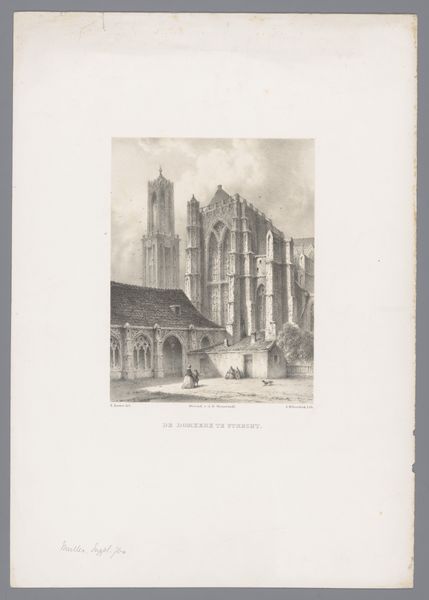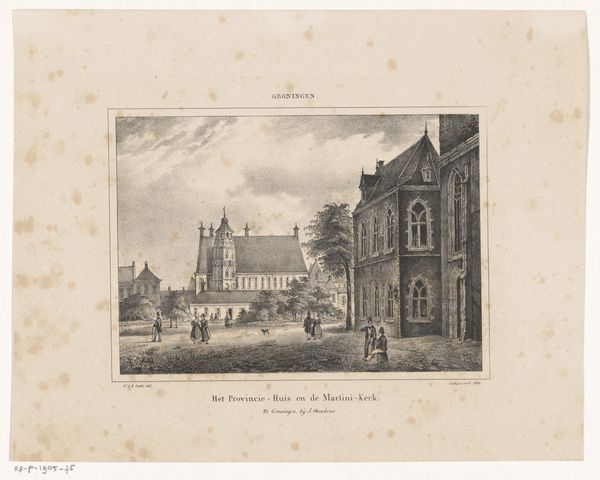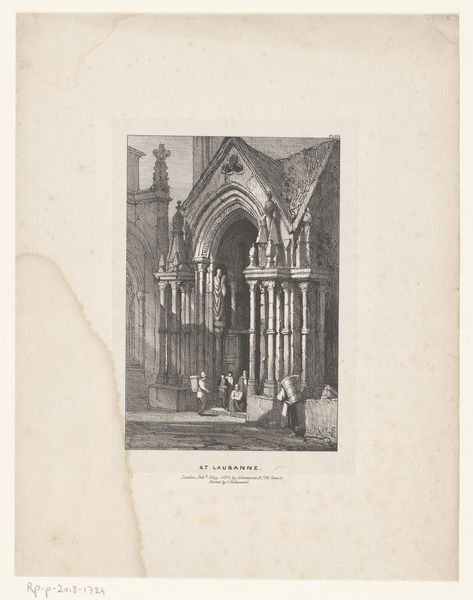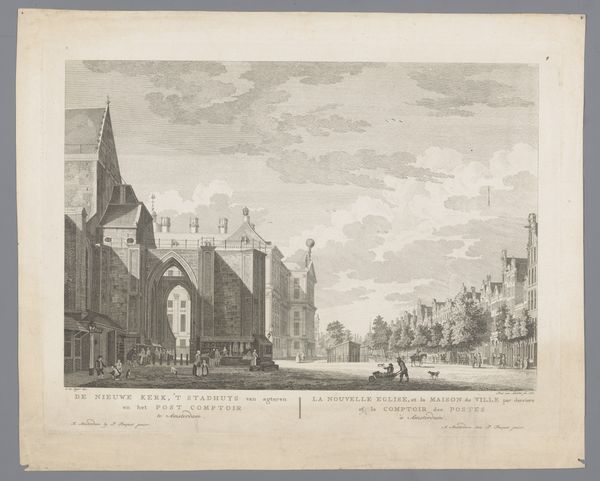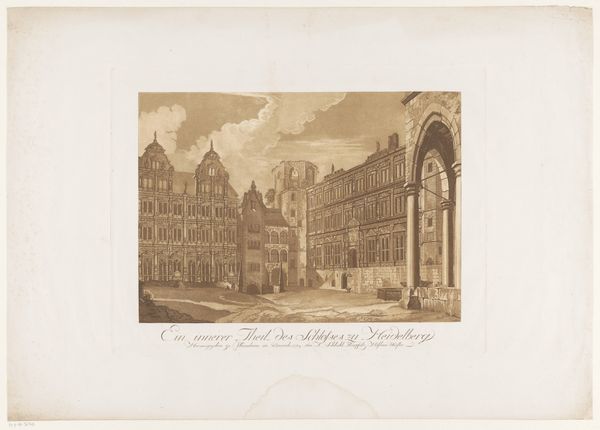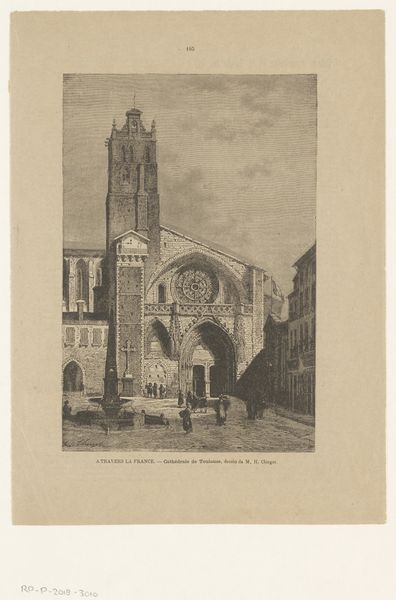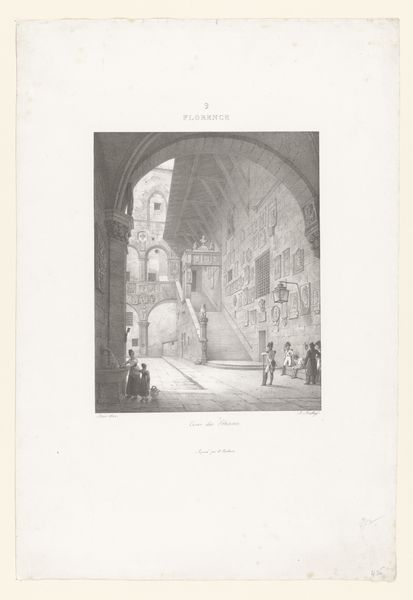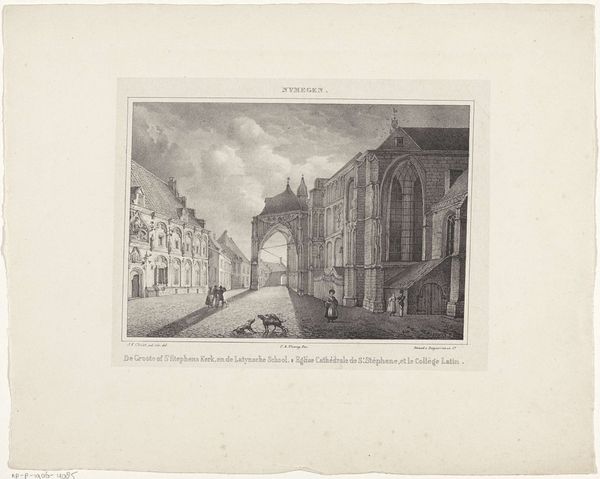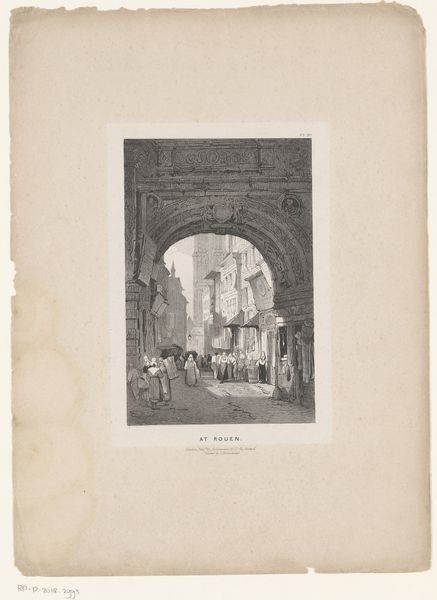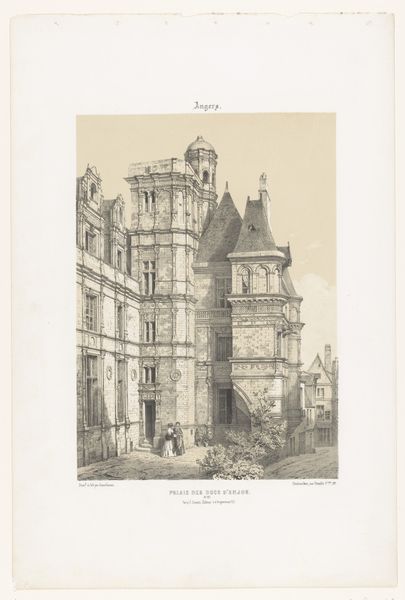
Gezicht op een deel van de Grote of Sint-Stevenskerk te Nijmegen 1858
0:00
0:00
johanneshilverdink
Rijksmuseum
Dimensions: height 446 mm, width 312 mm
Copyright: Rijks Museum: Open Domain
Curator: Johannes Hilverdink’s 1858 etching, “Gezicht op een deel van de Grote of Sint-Stevenskerk te Nijmegen,” presents a fascinating study in architectural form. Editor: It has a melancholic tone, wouldn’t you say? Almost oppressive. Curator: I’m drawn to the masterful rendering of light and shadow which defines the monumental facade of the church, creating an impressive structural interplay of shapes and textures. Notice the precise detail in the stone work. Editor: But consider the societal backdrop of the mid-19th century, and these towering religious structures become symbolic of hierarchical power dynamics—the church, in many ways, representing societal control. Do we not have to ask what it represents for the disenfranchised communities of the time? Curator: One cannot deny the presence of such social forces but in focusing too narrowly on them, you risk overlooking the artwork’s formal elements; how the strong vertical lines draw the eye upwards, accentuating the height and grandeur of the building, culminating at the very top in an impressive tower with very delicate decoration. Editor: And one also cannot ignore the romanticized depiction of the common people in the foreground, rendered as almost picturesque figures. Their proximity to the imposing church highlights a clear division of space, a physical manifestation of unequal status and access to social mobility at the time. It should be recognized that while religion can represent the potential for redemption and charity, so frequently this was and remains not the case. Curator: Perhaps so. But from my perspective the success lies in the artist's technical skill. The depth he creates in this two-dimensional image through careful line work is remarkable; it achieves a very satisfying compositional harmony and balance. Editor: Ultimately, our appreciation of Hilverdink’s work is necessarily coloured by these competing considerations. A piece can be at once beautiful but not equitable. Curator: A worthwhile tension to explore indeed, to truly appreciate the depth in its design and form. Editor: And its historical and social resonance in contemporary times.
Comments
No comments
Be the first to comment and join the conversation on the ultimate creative platform.
